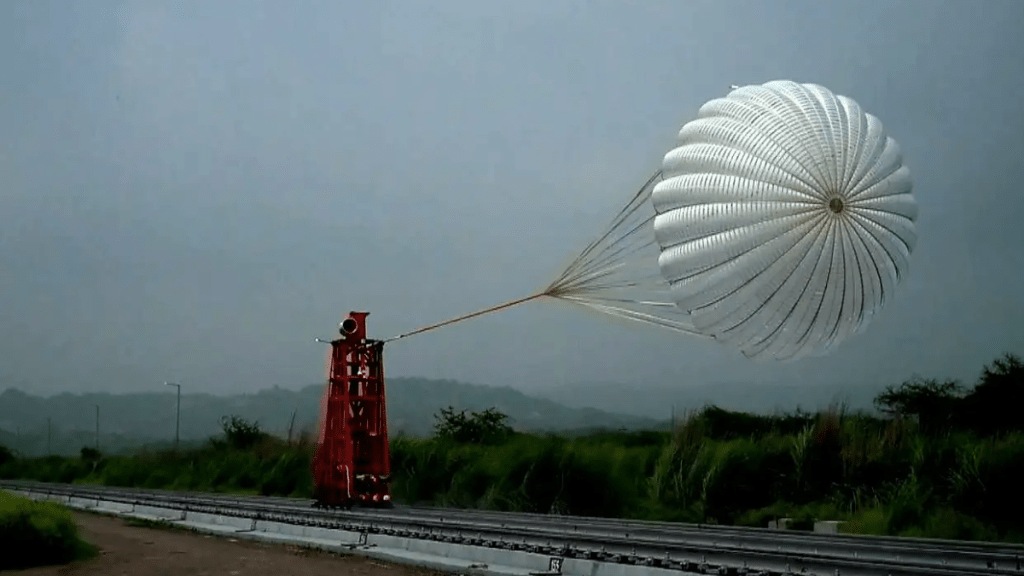In a remarkable stride towards India’s self-reliance in space technology, the Gaganyaan mission, which marks India’s first attempt at a manned space exploration, will feature “Made-in-India” drogue parachutes.
These parachutes are being produced by the Ordnance Equipment Factory in Hazratpur, Uttar Pradesh, as part of the Atmanirbhar Bharat initiative, showcasing the nation’s capability to develop and manufacture critical components domestically.
Gaganyaan Mission and its Objectives
The Gaganyaan mission, overseen by the Indian Space Research Organisation (ISRO), aims to demonstrate India’s ability to conduct human spaceflights. This mission is not only about reaching space but also about ensuring the safe return of astronauts to Earth.
To achieve this, ISRO has ordered 28 sets of drogue parachutes. So far, 12 sets have been delivered, with the remaining expected next month. These parachutes are essential for reducing the speed of the crew module during re-entry, ensuring a safe landing for the astronauts.
Importance of Drogue Parachutes
Drogue parachutes play a critical role in decelerating and stabilizing the rapidly descending crew module. They are part of a sequence of parachutes designed to ensure a controlled and safe descent:
Apex Cover Separation (ACS) Parachutes: Initiate the sequence by removing the protective cap.
Drogue Parachutes: Stabilize the module and reduce its speed significantly.
Pilot Parachutes: Further decelerate the module and deploy the main parachutes.
Main Canopies: Ensure the final reduction in velocity for a safe landing.
Manufacturing Excellence
The drogue parachutes are crafted from special materials, including Nylon 66, which can withstand high temperatures up to 250 degrees Celsius. This material choice ensures the parachutes can endure the harsh conditions of re-entry. The development of these parachutes is a collaborative effort between the Defence Research and Development Organisation (DRDO) and ISRO.
The deployment process begins when the capsule reaches an altitude of 7 kilometers. The ACS parachutes are released first, followed by the drogue parachutes that stabilize and decelerate the descent. Next, the pilot parachutes are deployed, which then trigger the main canopies, ensuring a controlled and safe landing.
Strategic Impact
The Gaganyaan mission’s use of indigenous drogue parachutes highlights India’s growing capabilities in space technology and aligns with Prime Minister Narendra Modi’s vision of an Atmanirbhar Bharat. This achievement is a significant step in showcasing India’s ability to produce high-quality, critical technology components domestically.
As India moves closer to launching the Gaganyaan mission, the successful incorporation of these parachutes will not only bolster national pride but also strengthen India’s position in the global space exploration community. The mission lays the foundation for future human spaceflights and demonstrates India’s potential to contribute significantly to space exploration.


